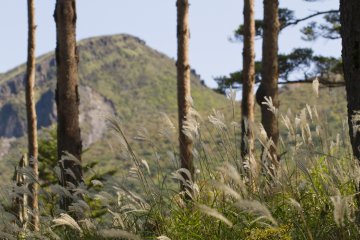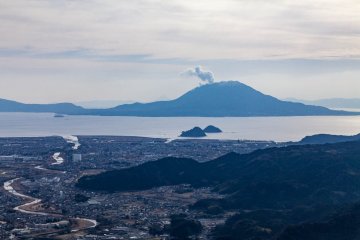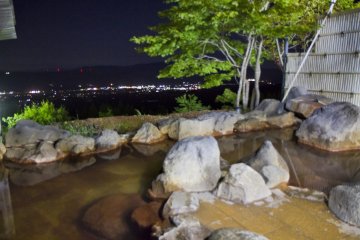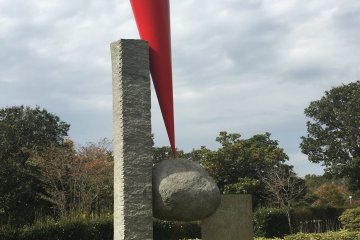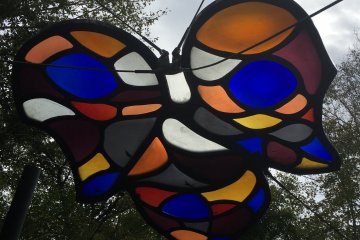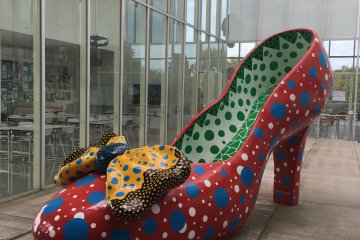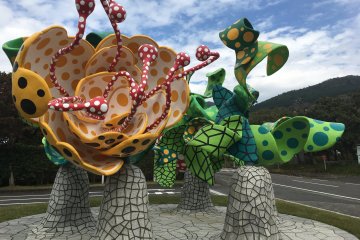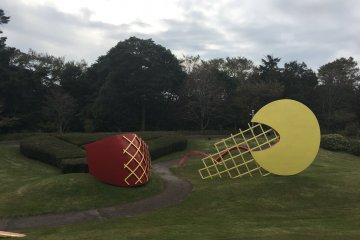Set in 13 acres of serene countryside and woodland, Kirishima Open-Air Museum provides an opportunity to appreciate the beauty of both art and nature.
Bold start
Welcoming visitors at the entrance to the park is “Flowers of Shangri-la,” a representation of a huge bunch of colorful posies symbolizing life, hope and the soul. This artwork is one of two polka-dot themed creations by Japanese contemporary artist Yayoi Kusama, acknowledged as one of the most important living artists from Japan.
Her other work for the museum, a high heel, sits in the Art Hall. According to Kusama, it was designed to convey “happiness that knows no bounds.”
Harmony of people and nature
Moving outside, there are more than 20 fascinating exhibits of varying colors, sizes and styles to explore. Some blend into the stunning natural setting; others definitely stand out.
Though hugely different in their approach, the creators of the art works are united in a common theme - the relationship between mankind and nature.
“Insiders” by renowned British artist Sir Antony Gormley OBE, who created the iconic Angel of the North in northern England, consists of five metal statues expertly camouflaged in the ground’s woodland. Each has a different pose, symbolizing people’s various interactions with nature. Try and spot all five!
Keiji Uematsu’s work, “Floating Form Red,” also represents the connection between people and nature. The red cone tip's point of contact with the stone symbolizes a source of new energy as a result of the connection.
Tunisian-born Phillip King conveys the theme with a series of giant red and yellow iron structures symbolizing the Sun and Earth.
Local influences
On a sunny day, visitors can enjoy a sea of colors dancing on the forest path as the sunlight shines through the stained glass of “Satsuma Brilliance.” Designed by Singaporean artist Tang Da Wu, this artwork symbolizes the leaf of a sweet potato, for which Kagoshima is famous.
Fun for all
Whether visitors want to muse on the art, get lost in the view or even have a seat on some of the sculptures, there is something to attract everyone at Kirishima Open-Air Museum.
The works by Japanese and international artists not only showcase Kagoshima Prefecture’s history and culture but also provide a new way to enjoy its beautiful nature.
Don’t forget to check out the Art Hall, which exhibits permanent collections, as well as the café and mini-library. There is also a multi-purpose space for artistic education and workshops.



